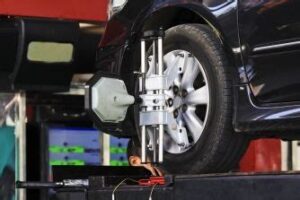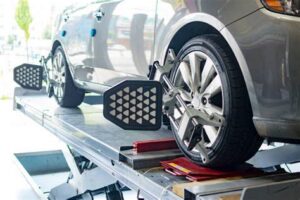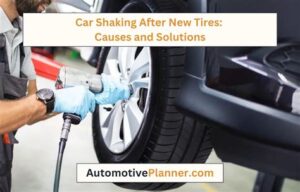How Often Does Your Car Need Alignment?
Maintaining your vehicle’s optimal performance goes beyond regular oil changes and tire rotations; one crucial aspect often overlooked is car alignment. Proper alignment ensures that your wheels are positioned correctly in relation to the road and each other, which not only enhances driving comfort but also prolongs the life of your tires. In this article, we will delve into understanding car alignment and its importance, explore how frequently you should schedule alignments, and identify the signs that your car may need immediate attention. We’ll also discuss the negative effects of poor alignment on your vehicle’s performance and the benefits of incorporating regular alignments into your maintenance routine. Whether you’re a new driver or a seasoned car owner, this guide will equip you with essential knowledge to keep your vehicle running smoothly and efficiently.
Understanding Car Alignment: What Is It and Why It Matters
Car alignment refers to the adjustment of a vehicle’s suspension system, aligning the wheels to ensure they are perpendicular to the ground and parallel to each other. Proper alignment plays a critical role in maintaining optimal vehicle handling and performance. When your car is correctly aligned, it not only drives straighter but also ensures even tire wear, ultimately extending the life of your tires.
The importance of car alignment cannot be overstated. Misalignment can lead to several issues including poor handling, reduced fuel efficiency, and accelerated tire wear. This means that how often you get your car aligned can significantly impact both your safety and your budget in the long run.
Additionally, various factors can cause misalignment, such as hitting potholes, curbs, or any rough terrain. Regularly checking your vehicle’s alignment helps you catch any problems early, preventing compounded issues down the line. By understanding the fundamentals of car alignment, you can make informed decisions about when and how often to seek alignment services for your vehicle, ensuring a smoother ride and enhanced safety on the road.
How Often Should You Get Your Car Aligned? Key Considerations
When discussing how often you should get your car aligned, several factors come into play. Vehicle alignment is not a one-size-fits-all service, and the frequency can vary based on your driving habits, vehicle type, and road conditions. Here are the key considerations that can help you determine the right alignment schedule for your vehicle:
- Manufacturer Recommendations: Always start with your vehicle’s owner manual. Many manufacturers suggest alignment checks every 6,000 to 10,000 miles, especially if you frequently drive on rough roads.
- Driving Conditions: If you often drive in areas with potholes, gravel roads, or heavy traffic, you may need to get your alignment checked more regularly. Driving on such surfaces can affect your alignment more than smooth highways.
- Driving Style: Aggressive driving, such as rapid acceleration and abrupt turns, can lead to misalignment more quickly. If you tend to drive this way, consider a more frequent check.
- Seasonal Changes: Changes in seasons can affect road conditions. It’s a good practice to have your alignment checked at the beginning of winter or spring to prepare for potential hazards.
- Tire Wear Patterns: If you notice uneven tire wear, it may indicate a need for alignment. Check your tires regularly, and if you see any irregular patterns, schedule an alignment immediately.
While the general recommendation may be to check your vehicle’s alignment every 6,000 to 10,000 miles, keep your specific driving conditions and habits in mind. Regularly checking your alignment not only ensures better vehicle performance but also enhances your overall driving experience.
Signs That Indicate Your Car Needs Alignment Now
Maintaining proper car alignment is essential for ensuring a smooth driving experience and prolonging the life of your vehicle. Here are several how often you should be vigilant about the signs that indicate your car might need an alignment:
- Uneven Tire Wear: One of the most noticeable signs is uneven tire wear. If you check your tires and observe that the tread is wearing down more on one side, or in a pattern that looks uneven, it’s a strong indicator that your wheels are misaligned.
- Vehicle Pulls to One Side: If your car tends to drift or pull to the left or right while you’re driving straight, this is a clear sign that your alignment needs attention. It could significantly affect your control over the vehicle.
- Steering Wheel Off-Center: When driving on a straight road, your steering wheel should be centered. If you notice it’s tilted to one side while driving straight, this could mean misalignment.
- Vibration in the Steering Wheel: A vibrating steering wheel can also indicate a problem with your vehicle’s alignment or suspension. If you feel vibrations when driving, it’s time to have a professional check the alignment.
- Changes in Handling: If you notice changes in how your car handles, such as increased sensitivity to steering input or difficulty taking turns, your alignment may be off.
- Frequent Steering Adjustments: If you find yourself constantly making adjustments to keep the vehicle straight, alignment issues may be involved.
If you notice any of these signs, it is advisable to visit a professional mechanic to diagnose and rectify alignment issues promptly. This preventive measure can save you from further damage to your tires and suspension system, emphasizing the importance of understanding how often to check your vehicle’s alignment.
The impact of poor alignment on your vehicle’s performance can be significant and should not be overlooked. When your car’s wheels are misaligned, it can lead to a range of issues that affect not just the drivability of your vehicle but also its overall safety and longevity.
Firstly, poor alignment can cause uneven tire wear. When your wheels are out of alignment, they can drag against the road surface rather than rolling smoothly. This results in tires wearing down faster on one side than the other, leading to the necessity for premature tire replacement. Considering the cost of new tires, this is an expense that could easily be avoided by maintaining proper alignment.
Additionally, misalignment can significantly impact your vehicle’s handling. You may notice that your car pulls to one side or that the steering feels loose and unresponsive. This can make driving more challenging and less enjoyable, especially when navigating curves or during emergency maneuvers. Consequently, it increases the risk of accidents, highlighting the importance of regular alignment checks.
Another critical factor is fuel efficiency. A vehicle with poor alignment does not roll efficiently due to the increased rolling resistance. As a result, the engine has to work harder, leading to decreased fuel efficiency. Frequent trips to the gas station can be frustrating, and in the long run, this extra fuel cost adds up.
Neglecting proper vehicle alignment can lead to uneven tire wear, compromised handling, reduced fuel efficiency, and ultimately costly repairs. Therefore, it’s essential to be proactive about alignment maintenance and schedule regular checks to ensure your vehicle performs at its best. This can help you address alignment issues before they escalate, ensuring that you know how often your car needs attention.
Benefits of Regular Alignment: Saving Time and Money
Regular car alignment is more than just a maintenance task; it can lead to significant cost savings and improved vehicle performance. Here are some key benefits:
- Increased Tire Lifespan: Proper alignment helps to ensure even tire wear, which can extend the life of your tires. Without alignment, your tires can wear down unevenly, leading to premature replacement costs.
- Improved Fuel Efficiency: When the wheels are aligned, the vehicle requires less effort to move forward. This can lead to better gas mileage, meaning you’ll spend less on fuel over time.
- Enhanced Vehicle Handling: A well-aligned car provides better steering response and stability. This can improve your overall driving experience and make your trips safer.
- Fewer Repairs: Misalignment can contribute to other vehicle issues such as suspension damage and steering problems. By staying on top of your alignment, you can prevent these more serious and costly repairs.
- Time Efficiency: Frequent checks and maintenance can save you time in the long run by avoiding unexpected breakdowns or tire changes due to misalignment.
| Benefit | Outcome |
|---|---|
| Increased Tire Lifespan | Longer-lasting tires and lower replacement costs |
| Improved Fuel Efficiency | Cost savings at the pump |
| Enhanced Vehicle Handling | Smoother rides and improved safety |
| Fewer Repairs | Reduced maintenance costs over time |
| Time Efficiency | Less downtime for repairs and replacements |
Overall, understanding how often car alignment should be checked can lead to significant financial and performance benefits, making it a crucial aspect of vehicle maintenance.
Frequently Asked Questions
What is a car alignment?
Car alignment refers to the adjustment of the angles of the wheels so that they are set to the car manufacturer’s specifications. This ensures that your vehicle drives straight and helps extend the lifespan of tires.
How can I tell if my car needs alignment?
Signs that your car may need alignment include uneven tire wear, the steering wheel being off-center, the vehicle pulling to one side, and vibrations while driving.
How often should I get my car aligned?
It is generally recommended to have your car aligned at least once a year or every 12,000 miles. However, if you frequently drive on rough roads or hit curbs, you may need it checked more often.
What factors can affect car alignment?
Several factors can affect car alignment, including hitting potholes, curbs, or speed bumps, as well as changes in load (like carrying heavy items) or worn suspension components.
Can misalignment impact fuel efficiency?
Yes, misalignment can result in increased tire drag, which can lead to more fuel consumption. Keeping your car properly aligned can help improve its fuel efficiency.
What is the cost of getting a car alignment?
The cost of a car alignment typically ranges between $50 to $100, but this can vary based on the make and model of your vehicle, as well as your location.
Can I perform a car alignment myself?
While some advanced DIY enthusiasts may attempt car alignment using specific tools, it is generally recommended to have it done by a professional who can ensure precision and accuracy.





